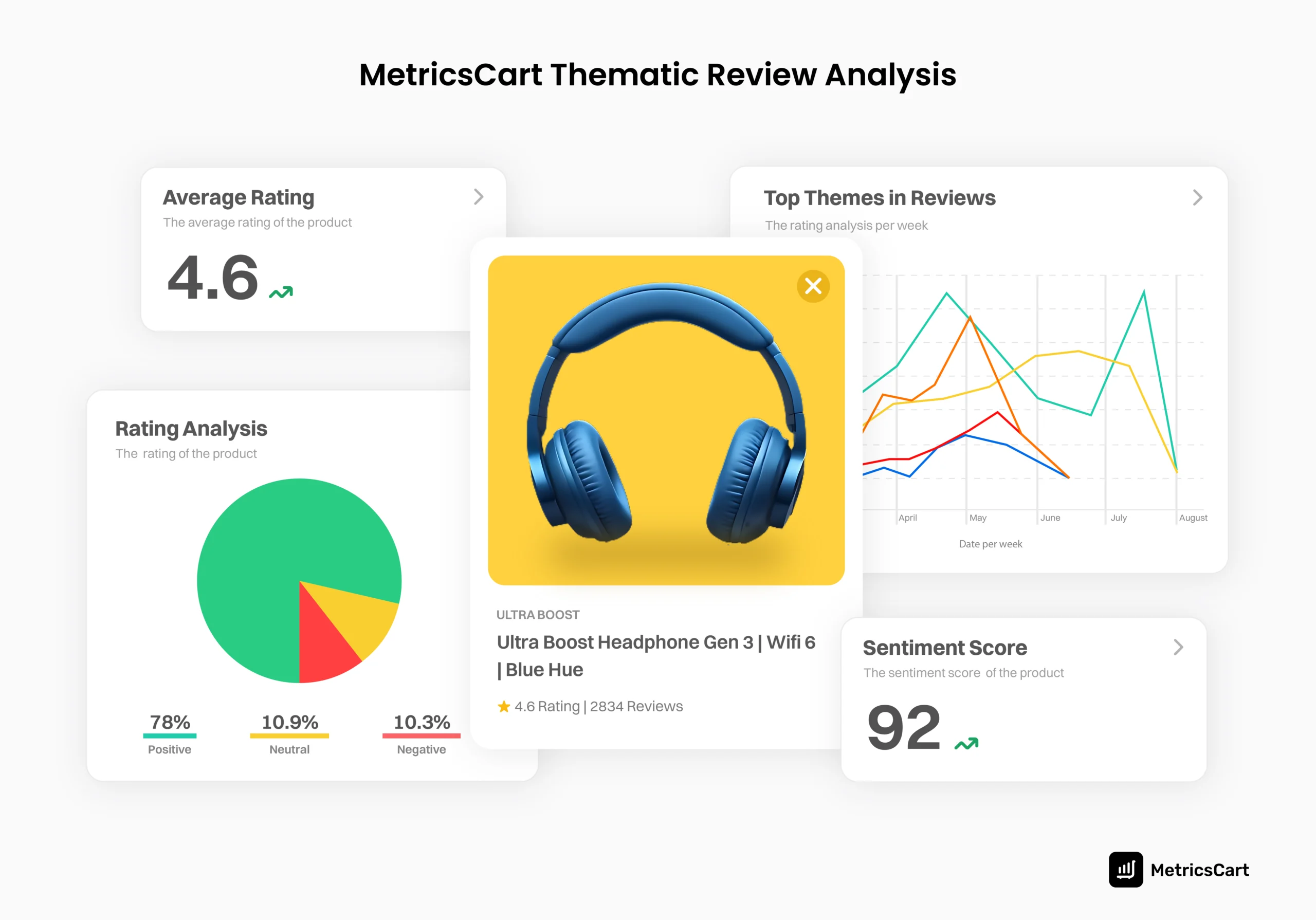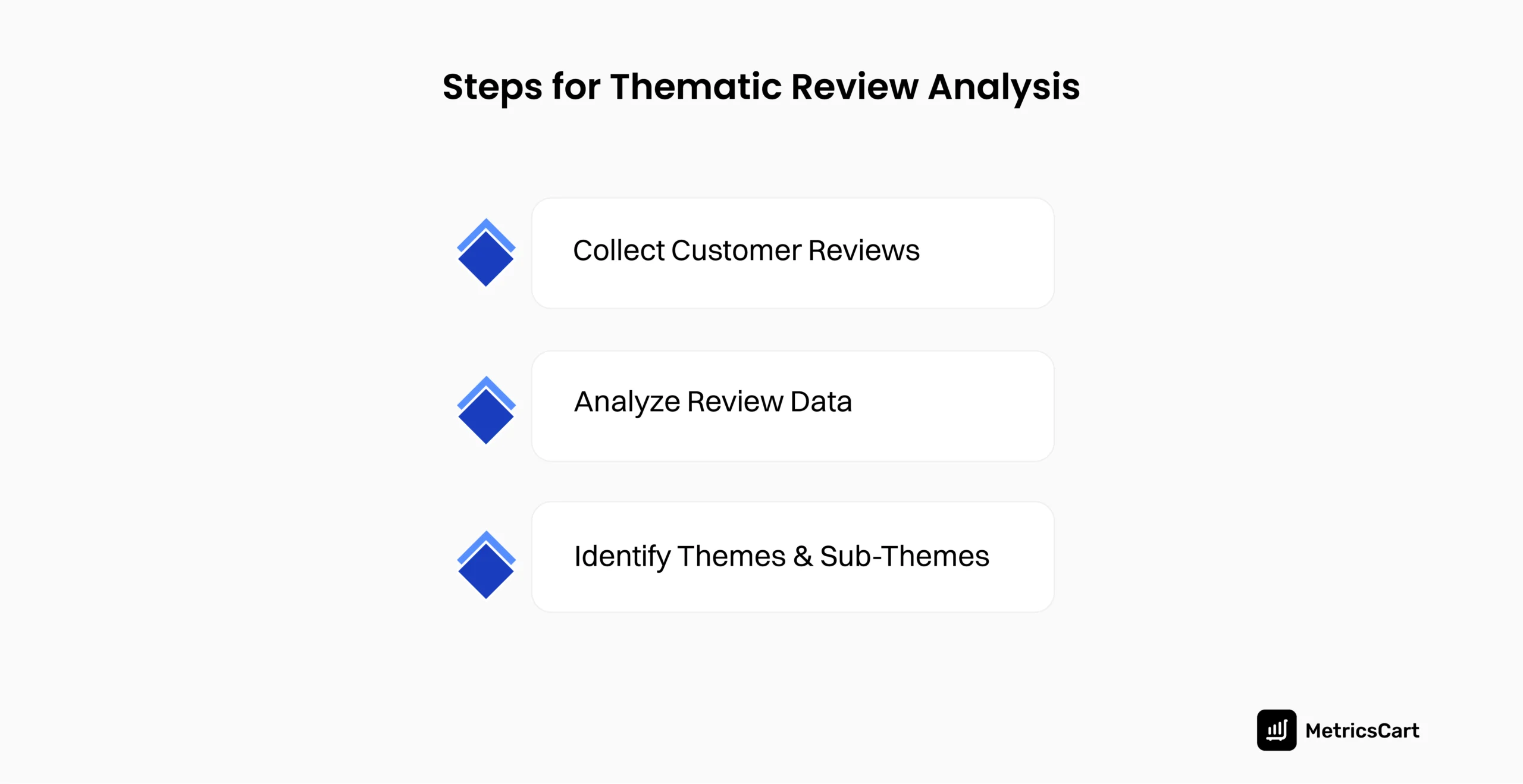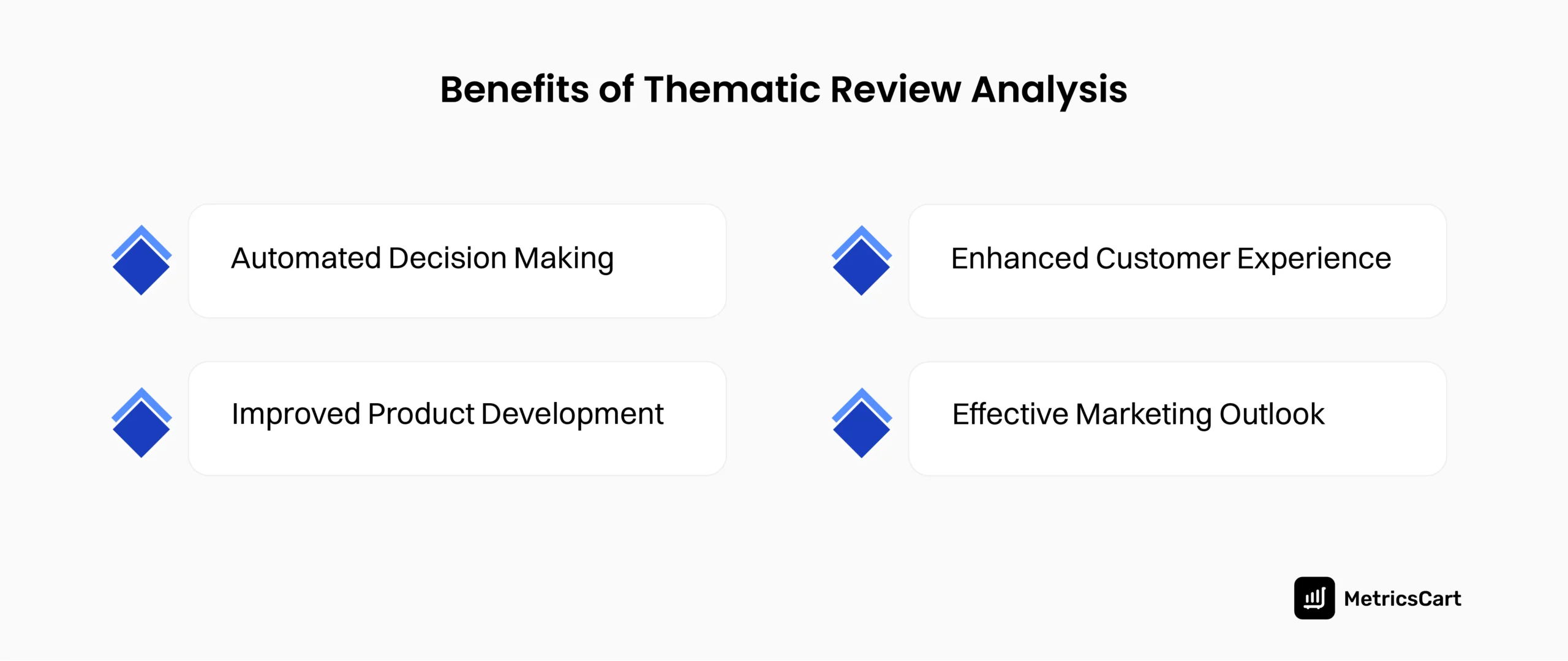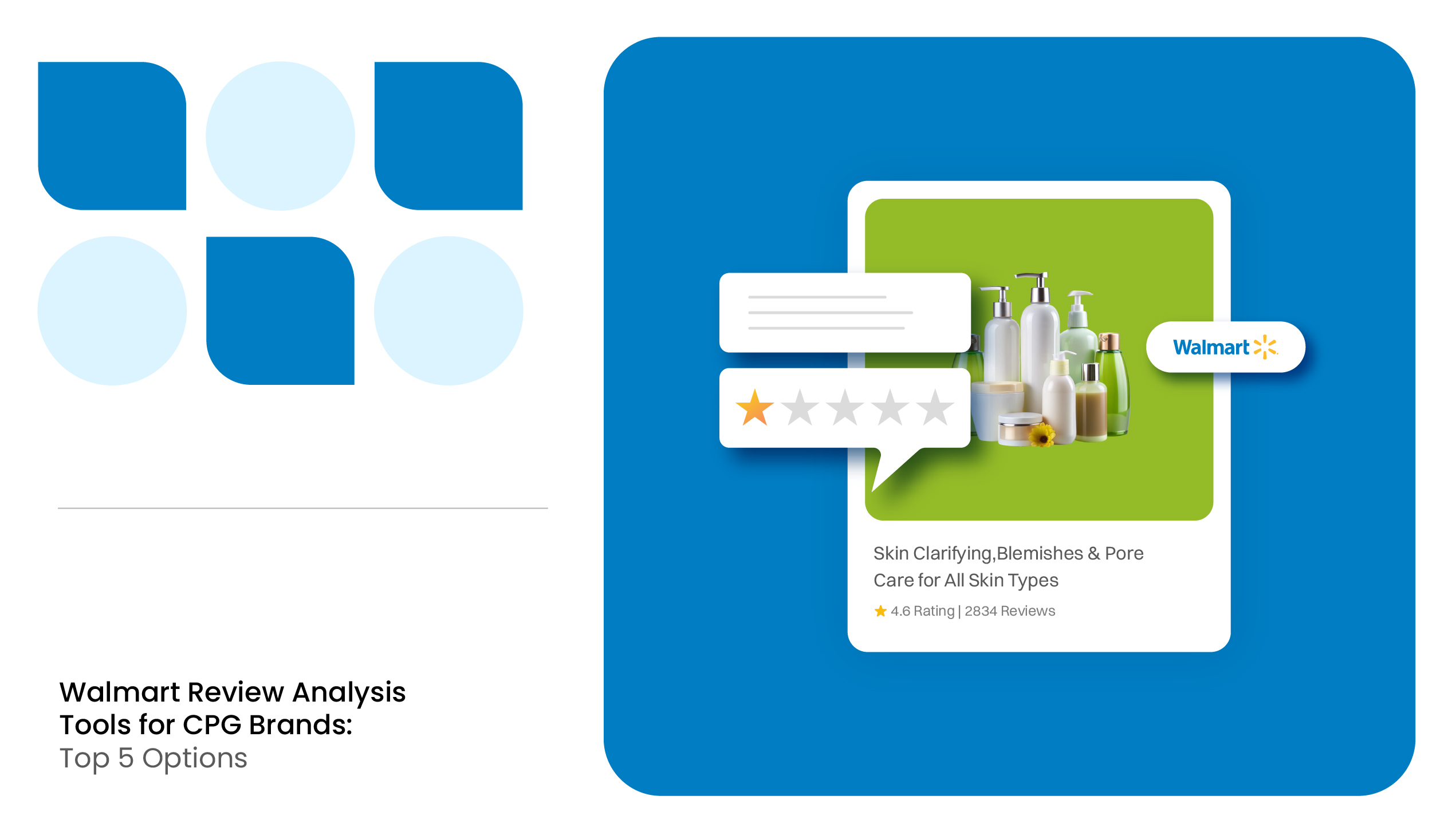Alright, let’s be honest; you’re drowning in customer reviews. Some are positive, some are brutal, and others? Well, let’s just say they could use a little more caffeine.
But here’s the deal: every single one of those reviews holds a piece of gold. You just need to know how to mine it, and no, we’re not talking about throwing a dart at a wall and hoping for the best.
We’re talking about thematic review analysis, the hardcore, data-driven way to take all those customer reviews and turn them into something that can actually help you sell more stuff.
Instead of wasting hours scrolling through endless reviews about your product performance among consumers, you could be identifying patterns, determining what’s really going down, and making decisions that actually matter.
Whether it’s your pricing, shipping, or just the fact that people keep commenting on your packaging, thematic analysis helps you understand what your customers are talking about.
An advanced and easy-to-use review monitoring solution can automate this process of tracking and analyzing your customer reviews.
So buckle up. We’ll show you how this powerful tool can help you dominate your e-commerce game and leave the competition in the dust.
What Is Thematic Review Analysis?
Thematic analysis is a method of analyzing qualitative data, like customer reviews, by identifying, analyzing, and interpreting patterns or themes.
Think of it as looking at reviews not just as individual pieces of feedback but as a treasure trove of insights. Instead of focusing on isolated reviews, thematic review analysis lets you zoom out and see the big picture.

By organizing feedback into key themes and sub-themes, you can uncover common trends, customer pain points, and areas where your brand can improve.
For example, if multiple customers rave about your product’s durability but complain about its size, those are two major themes that give you actionable insights.
READ MORE | Want to get more reviews for your product? Check out our blog on How to Get More Reviews: 7 Tips to Improve Product Ranking
Why Should You Choose Thematic Review Analysis for Your Brand?
Customers don’t just buy products; they want a seamless, personalized, and enjoyable shopping experience. Unlike customer sentiment analysis, automated thematic analysis allows e-commerce businesses to analyze ratings and reviews for product development on a nuanced level, leading to the following:
- Improved customer satisfaction by addressing recurring issues.
- Higher conversion rates through better product page optimization.
- Stronger customer loyalty by implementing feedback.
- Data-driven decisions that gratify customer needs and expectations.
With millions of online reviews influencing buying decisions on multiple e-commerce platforms, thematic review analysis helps you cut through the noise, focus on what matters, and refine your strategies.

Steps for Thematic Review Analysis
Conducting thematic analysis might sound overwhelming, but don’t sweat it. It’s a structured process that can be automated using third-party review monitoring solutions, and the results are well worth the effort.
So, let’s break the process down into manageable steps:

Collecting Customer Reviews
Before you can analyze anything, you need data. This is done by collecting reviews from various e-commerce platforms such as Amazon, Walmart, Target, and your brand website.
The more diverse your data sources, the more comprehensive your insights will be. Collect reviews from different regions, product categories, and platforms to get a well-rounded view of customer perception of your brand.
Analyzing the Data
Now that you’ve got the reviews, it’s time to roll up your sleeves and get started. The collected reviews will be analyzed to understand consumers’ general sentiment toward your brand.
Once this step is completed, specific words or phrases that recur in the reviews will be identified. Also, have particular features of your product been mentioned repeatedly? This will help you understand the general landscape of customer feedback and user generated content.
Identifying Themes & Sub-Themes
Once the customer review data has been analyzed, it will be grouped it into themes and sub-themes.
When compared to sentiment analysis, themes give you a higher-level understanding of your data by showing you what’s driving customer sentiment in specific areas that can otherwise seem oblivious.
For example, the sub-themes “fast shipping,” “easy returns,” and “responsive customer service” can be included under the central theme “customer service.”
For a brand manager or other e-commerce professionals, this translates to:
- Better review analysis
- Clarity on customer pain points
- Reduced cart abandonment
- Constructive brand improvement
With MetricsCart, the whole review management process becomes automated. It monitors your customer reviews and can analyze the top review KPIs using advanced algorithms. It can also break down reviews into themes and sub-themes that contain valuable insights.
READ MORE | Confused about which review management software to choose? Check out our blog on the 10 Best Rating and Review Analysis Software for E-Commerce in 2024
How Thematic Review Analysis Can Help Your E-Commerce Business
Now that we’ve covered the steps behind thematic review analysis, let’s explore some of the key benefits for e-commerce brands.

Automated & Data-Driven Decision Making
By using automated thematic analysis, you don’t guess what customers want; instead, you act on complex data with actionable insights.
This helps brands make informed decisions about product development, marketing strategies, and customer service improvements.
For instance, a beauty brand selling skincare products on Amazon used thematic review analysis to identify that customers frequently mentioned “fast absorption” and “lightweight texture” in positive reviews.
However, negative reviews highlighted “lack of fragrance-free options.” The brand leveraged this insight to introduce a fragrance-free version of their bestseller, leading to a positive increase in sales and improved customer satisfaction.
Improved Product Development
Themes around product features can highlight what’s working and what needs improvement. If multiple customers praise one feature but criticize another, your product department can use this feedback to guide product iterations.
A home appliance company noticed that while customers loved the durability of their coffee maker, several complaints mentioned difficulties in cleaning the filter.
By analyzing these recurring themes, the brand redesigned the filter mechanism for easier maintenance. After launching the updated product, return rates dropped by a considerable margin, and positive reviews surged.
Continuous improvement based on real customer insights leads to better products, relevant e-commerce pricing strategies, higher sales, and stronger brand loyalty.
Enhanced Customer Experience
The insights from thematic review analysis allow you to address customer pain points directly.
Whether it’s slow shipping, confusing product descriptions, or a lack of size variety, thematic review analysis pinpoints areas where you can enhance the overall customer experience.
Satisfied customers are more likely to become loyal buyers and advocates for your brand.
For example, an online fashion retailer identified recurring complaints about inconsistent sizing in their customer reviews. Using thematic analysis, they pinpointed specific product categories that were causing the confusion.
By adding detailed size guides and improving product descriptions, they reduced return rates and increased customer retention.
More Effective Marketing
Once you’ve identified the themes in your customer feedback, you can tailor your marketing messages to highlight what matters most to your audience.
If customers are consistently praising your fast delivery, for example, make that an important part of your holiday campaigns.
A pet food brand found that many customers were praising their “grain-free” formula and how it improved their pets’ digestion. They updated their ad campaigns and product listings to emphasize this feature. This data-driven marketing shift resulted in a boost in click-through rates and higher conversion rates.
By aligning your messaging with customer sentiment, you’re more likely to resonate with your target market.
READ MORE | How important is thematic analysis for your e-commerce business? Check out our new article Why Thematic Review Analysis is Key to E-Commerce Growth
Conclusion
Customer reviews are gold mines of information, and thematic review analysis is a tool for digging deep and extracting insights.
It transforms unstructured feedback into structured, actionable data that can drive everything from product development to customer service improvements.
By understanding the themes that matter most to your customers, you can deliver a superior e-commerce experience that leads to increased customer loyalty, higher sales, and a more substantial brand presence.
An e-commerce product review analysis platform can help you make sense of customer reviews, monitor your performance across platforms, and stay ahead of the competition.
Looking to Improve Your Brand’s Success?
FAQ
Thematic analysis helps e-commerce brands make informed decisions by transforming unstructured customer feedback into actionable insights.
E-commerce brands should conduct thematic review analysis regularly, ideally quarterly or bi-annually, to stay updated on customer sentiments and emerging trends.
Thematic review analysis can be applied to various types of data, including customer reviews, survey responses, social media comments, and support tickets.






